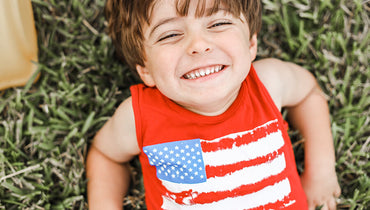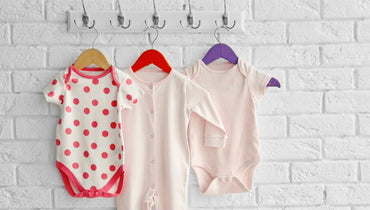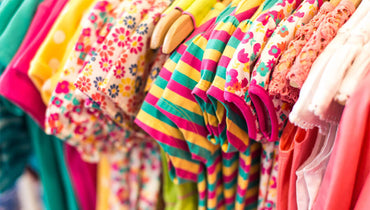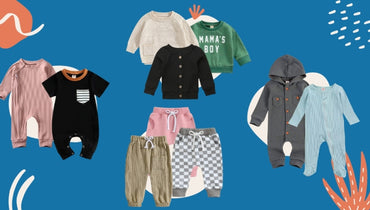Mini Cart
After you have brought your baby home from the hospital, there are so many things to take care of. Undeniably, ensuring the safety of a child is the top priority of every parent from the moment this little person is born. It may seem so complicated at the very beginning, though, later when your baby becomes more independent, there will be different threats. So, let’s begin with the first year of life and then proceed to toddler age.
Rules to Keep a Newborn Safe
One of the most dangerous and unexpected problems that may happen is the sudden infant death syndrome. The contemporary science has no definite rules of the causes for SIDS, however, there are certain statistical data that has been collected on the matter. There are certain physical and risk factors that may influence the possibility of SIDS. To learn more about them it is better to check the official resources and consult with the pediatrician. However, there are some aspects parents can take into account to reduce the risk. So, how to ensure the protection of a child against SIDS?
- Sleeping on the back: When your newborn sleeps on the side or stomach, penetration of fresh air can be prevented. There can be many reasons for this, including physical ones. That is why it is better to follow this recommendation and make sure that your newborn sleeps on its back.
- The soft surface of the crib is another danger. Some parts of a pillow, mattress, or even blanket can block the airway. Remember, it is better to dress your child in a warm onesie and put it in a sleeping sack than to use a blanket.
- Sharing a bed can be also a threat. While many breastfeeding specialists claim that sharing a bed is necessary to eliminate problems with feeding, this can be a real danger. It is better to carefully weigh all the pros and cons, consult with a pediatrician, and pay attention to the statistics of SIDS.
- Overheating is an often cause of skin problems as well. Besides, it may lead to sudden infant death. Always check the neck of your baby to make sure that it is not too hot. Remember, nose and hands are not the indicators. Even if they are cool, it does not mean that a baby is cold. The neck is the proper place to check if you should dress or undress your baby.
It is generally recommended for responsible parents to carefully study the available information on the SIDS risks and to make conclusions to keep a baby safe. Aside from this, there are plenty of aspects to consider at home, while strolling and traveling. We have collected more useful recommendations to ensure that your baby won’t get hurt:
5. Never Leave Your Child on the Changing Table
The most common reason for injuries of newborns is caused by their falling from a changing table. This happens in the matter of a second. You may just make one step to take a new diaper, and your newborn will demonstrate the new skill to turn. To avoid this situation, be sure that your changing table has got elevated edges. Besides, arrange everything you need for baby care and changing routines so that every item is at your disposal without the necessity to go anywhere. This is extremely important as the height of a changing table is usually adopted to the convenient height of an adult. Just imagine how high it is for a newborn.
6. Take Care of the Safety in the Car
Your first journey in the car will happen on the day you bring your baby home from the hospital. It means that everything should be foreseen before birth. Buy a special car seat that is suitable for newborns. In summer, make sure that it is not installed near the window that is exposed to the sun. It won’t hurt your child but can irritate your little passenger. In winter, it is important to remember that placing a baby in the car seat dressed in an overall is dangerous. Belts have to be tightly closed. That is why an overall should be taken off, while a newborn should be covered with a blanket over the belt.
It is worth mentioning that a newborn car seat should be facing backward in the rear seat, while the airbag should be disabled. If there are no rear seats, it is allowed to place it in front, however, remember to disable an airbag. Make sure to carefully read the manual so that to correctly install the seat. A couple of extra minutes spent on this can cost the life of a baby.
7. Protect the Skin of Your Baby
The skin of your newborn is soft and thin. Besides, it actively participates in thermal regulation. That is why it is crucially important to follow the below tips to ensure that it won’t be hurt:
- Outfits should be produced of natural fabrics only. Thanks to this, even if your baby is overheated, the sweat will be absorbed by the textile, therefore, eliminating the danger of overheating and irritation on the skin.
- Use hypoallergenic washing detergents. If your baby is prone to allergies, this is not an easy task. The surest way is to try several products from different manufacturers and check attentively the reaction.
- Always rinse twice after washing. You may be using the softest detergent, however, it is still chemical. That is why always rinse your baby’s clothes twice.
- Do not expose the skin to the sun. This rule is applied to both strolling outside and even playing in the crib that is near the open window in summer. Being in the sun can lead to diverse skin problems. That is why make sure that you have got sunscreen at home.
- Every time you change your baby, have a look at the state of the skin. Check if it is dry or cracked. These may be caused by such factors as water or the adaptation of the skin to the new environment. There are plenty of moisturizers, powders, and oils that will help eliminate the discomfort your child may experience.
8. Hold Your Newborn Correctly
Most people know that while holding a newborn, it is necessary to hold the neck and back because the muscles are not strong enough to hold the body weight. This is the correct approach. Always make sure that your arm is securely placed under the back, while the head can rest in the arm crook or on the hand.
When your baby grows and can hold the head, it is possible to hold him/her vertically. One hand should be placed under the butt as if your child is sitting on the forearm, while the second hand should hold the back to make sure that your baby is pressed to you. Remember, the back is not strong enough, and supporting it is necessary to prevent problems in the future.
One more important aspect to consider is slings and various baby carriers. Some of them are indeed allowed for newborns. It is crucially important to carefully read the age recommendations and how to correctly place your newborn in a sling. Lots of parents are enjoying the convenience of carrying a baby in a sling, while a child is calm as it feels the smell of a parent.
9. Wash the Hands Often
Have you already noticed that your newborn likes sucking its thumb or even several fingers? This is natural. When your baby grows, he/she will investigate the world, and placing hands and different objects in the mouth are the ways to learn this world. So, keeping the hands and, later, toys clean are necessary to ensure that your baby won’t consume lots of viruses and bacteria. However, it is important not to make everything around sterile. Still, having contact with bacteria helps the immune system deal with them. That is why look for the balance between clean hands and sterile ambiance for a child.
Tips to Ensure the Safety of Crawling and Walking Babies
You have already mastered the main rules of behavior with a newborn. And the new stage of development will bring new challenges in your life. When your baby learns crawling and walking, home becomes a dangerous place. That is why here is what you should pay attention to when your baby reaches the age of 6-7 months.
10. Check Attentively All the Toys
When your baby gains certain independence (usually, this happens when he/she learns crawling and standing), he/she begin to choose toys to play with. This may happen when you are not around. That is why you must be sure that every toy is safe and is in order. If there are small parts that can be torn or if a toy is damaged, your baby may swallow these small parts. Choking is one of the main dangers for children until the age of three years.
Also, be careful with the outfits you select. Small buttons can be easily torn and swallowed. That is why it is better to avoid buying such clothes for a baby under 24 months at least. Later, this will depend on the behavior of your child.
11. Never Let Your Child Be Alone in the Bath
As soon as your baby learns to sit, it is possible to acquire a special bathing chair or simply sit him.her in the bath. However, this is still not safe to leave a child in the bath on one’s own. That is why before you put your infant in the bathtub, make sure that you have got everything, including shampoo, towel, toys, ready. Remember, the worst may happen when you have distracted for just a second. To reduce the risk of injuries in the bath, you may also purchase a special non-slippery cover for the bathtub.
12. Make Your Dwelling Safe
As soon your curious baby learns to stand, be sure that drawers will be open and all the contents will be thrown out of them. It is necessary to, first of all, be sure that there are no dangerous objects in the low drawers. There are special locks that can be used. However, in a couple of weeks, your baby will learn how to open them. Also, you should be psychologically ready that there will be no order for a certain time. Let your baby play with towels and clothes so that to feed the interest. Otherwise, he/she will find something else to deal with.

13. Buy Safety Locks and Stair Gates
The private house has a lot of advantages, however, it imposes more dangers to an infant. Preventing falls from the stairs is the first task. Installation of reliable gates will solve the problem. It is necessary to lock closets with garden tools and other instruments. Besides, the kitchen is always a dangerous place with all the gadgets and metal things you need. That is why rearrange everything there and place safe objects in lower drawers for a child to have fun with while you are cooking. It is also possible to place some toys in low drawers if you are not sure if there are safe tools in your kitchen.
14. Safety During Eating
When you begin giving vegetables and fruit to your child, always supervise it. If he/she has already got teeth, it is possible to use a nibbler for soft products to eliminate the danger of choking. It is also necessary to be sure that the feeding chair is stable and won’t fall if your baby jumps in it. Use the safety belts of the chair to prevent your child from falling. Also, do not let your baby laugh during eating. This is a dangerous habit that can lead to tragic circumstances.
Safety Measures are Never Excessive
When it comes to protecting a newborn or infant, every parent should be responsible and remember that this is his/her task to learn a child how to adapt to the environment around. Until the age of 2 years, it is hard to explain why something can be dangerous that is why this is the priority of parents to ensure that their child is not exposed to danger.









